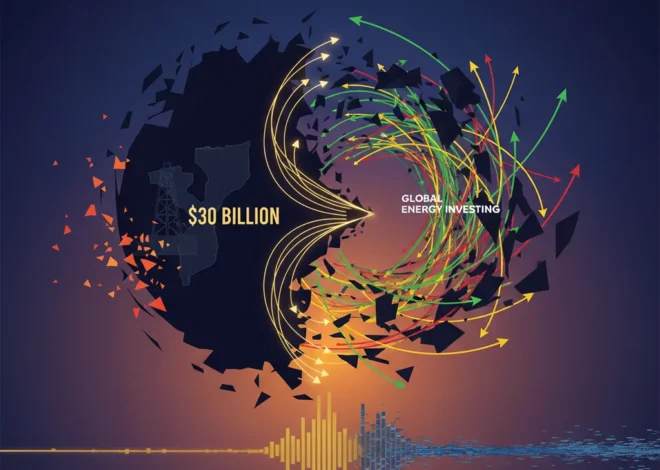High-Stakes Handshake: Decoding the Trump-Xi Trade Summit and Its Impact on the Global Economy
The global financial world is holding its collective breath. In a meeting room where every word carries the weight of trillions of dollars, U.S. President Donald Trump and Chinese President Xi Jinping are engaged in a critical two-hour negotiation. As reported by the Financial Times, this summit is a pivotal moment, a potential turning point in a trade war that has rattled markets, disrupted supply chains, and cast a long shadow over the global economy. With a deadline for new, sweeping tariffs looming, this is far more than a simple discussion; it’s a high-stakes negotiation that will dictate the trajectory of international trade, finance, and investing for the foreseeable future.
For investors, finance professionals, and business leaders, the outcome of these talks is the single most significant variable in today’s macroeconomic landscape. Will we see a breakthrough that unleashes a market rally, or a breakdown that plunges the global economy into further uncertainty? To understand what’s at stake, we must look beyond the handshake and delve into the complex history, the core points of contention, and the profound ripple effects this summit will have on everything from the stock market to the future of financial technology.
The Escalating Tensions: A Brief History of the Trade War
This critical meeting did not occur in a vacuum. It is the culmination of years of escalating economic friction between the world’s two largest economies. The narrative began with the Trump administration’s focus on the U.S. trade deficit with China, which it argued was the result of unfair trade practices. This led to the administration imposing a series of tariffs on Chinese goods starting in 2018, citing issues like intellectual property (IP) theft and forced technology transfers from U.S. companies operating in China.
China swiftly retaliated with its own tariffs on U.S. goods, targeting key American exports like soybeans, automobiles, and aircraft. What followed was a tit-for-tat escalation that has seen hundreds of billions of dollars in goods affected. According to analysis from the Peterson Institute for International Economics, the conflict has evolved through multiple phases, impacting a vast array of consumer and industrial products. This ongoing dispute has created immense volatility in the stock market, forcing businesses to navigate a landscape of uncertainty and re-evaluate decades-old supply chain strategies. The core of the disagreement goes far beyond simple trade balances; it strikes at the heart of China’s state-led economic model and America’s push for what it deems a more level playing field in global trading.
The End of an Era: Navigating the "Messy" Transition to a Post-American World
Decoding the Negotiation: What Each Side Wants
As President Trump and President Xi sit across the table, their objectives are both complex and, in many areas, diametrically opposed. Understanding their respective positions is key to predicting potential outcomes and their impact on the economy. The table below outlines the primary demands and negotiating points for both nations.
| United States’ Key Demands | China’s Key Demands |
|---|---|
| Structural Reforms: Demands for China to fundamentally alter its industrial policies, reducing state subsidies for key industries. | Removal of All Tariffs: A complete rollback of existing tariffs as a precondition for any comprehensive deal. |
| Intellectual Property Protection: Stronger legal frameworks and enforcement to prevent IP theft and end forced technology transfer. | Respect for Sovereignty: An end to what Beijing perceives as U.S. interference in its internal economic development model. |
| Increased Purchases: Commitments from China to purchase substantial amounts of U.S. agricultural, energy, and manufactured goods to reduce the trade deficit. | Fair Treatment of Chinese Tech: Lifting of restrictions on Chinese tech companies like Huawei, which the U.S. has labeled a national security threat. |
| Enforcement Mechanism: A robust, verifiable system to ensure China adheres to the terms of any agreement, with the U.S. retaining the right to reimpose tariffs. | Balanced Agreement: A deal that is seen as equitable and doesn’t compromise China’s long-term economic ambitions or national dignity. |
The chasm between these positions is significant. For the U.S., the focus is on creating irreversible, structural changes in China’s economy. For China, the priority is preserving its path to economic and technological leadership while removing the punitive tariffs that have hurt its export-oriented industries.
The Global Ripple Effect: From Wall Street to Main Street
The outcome of these talks will reverberate through every corner of the global financial system. The uncertainty has already had a tangible impact, with the International Monetary Fund (IMF) repeatedly warning that the trade tensions are a significant drag on global growth, estimating that the conflict could shave nearly a percentage point off global GDP (source). Here’s how different sectors are being affected:
- Stock Market Volatility: The stock market has become a real-time barometer of trade sentiment. News of progress sends indices soaring, while hints of a breakdown trigger sharp sell-offs. This volatility poses a major challenge for long-term investing and retirement planning.
- Corporate Earnings and Supply Chains: Companies across the globe are facing a double-edged sword: higher costs for imported materials due to tariffs and reduced access to the massive Chinese consumer market. Many are now undertaking costly and complex relocations of their supply chains to countries like Vietnam, Mexico, and India to mitigate risk.
- Central Banking Policy: The trade war has complicated the work of central banks like the U.S. Federal Reserve and the European Central Bank. They must weigh the inflationary effects of tariffs against the deflationary pressure of a potential economic slowdown, making monetary policy decisions incredibly delicate.
- The Future of Fintech and Blockchain: On a longer-term horizon, sustained geopolitical friction could accelerate the development of alternative financial systems. Nations may increasingly explore financial technology and blockchain-based settlement systems to reduce their reliance on the U.S. dollar-denominated global banking infrastructure, potentially fragmenting the world of finance.
Three Potential Scenarios and Their Market Implications
As the two-hour window for negotiations closes, the world is bracing for one of three broad outcomes. Each scenario carries dramatically different consequences for the economy and your investment portfolio.
- The Breakthrough Deal (Bull Case): In the most optimistic scenario, both sides announce a comprehensive agreement. This would likely involve China making significant concessions on structural issues in exchange for the U.S. rolling back all or most existing tariffs. The market reaction would be euphoric, likely triggering a significant, broad-based rally in the stock market. Sectors hit hardest by the trade war, such as technology and industrials, would lead the charge.
- The Truce (Base Case): This is widely considered the most probable outcome. The two leaders agree to a “ceasefire,” pausing the imposition of new tariffs while negotiators continue to work towards a larger deal. This would provide temporary relief to the markets, but the underlying uncertainty would remain. We would likely see a modest relief rally, but investors would remain cautious, knowing that the threat of future escalation has not been eliminated.
- The Breakdown (Bear Case): If talks collapse without any agreement, the consequences would be severe. The U.S. would likely move forward with its threatened tariffs on the remaining hundreds of billions of dollars of Chinese imports. China would inevitably retaliate, and the global economy would be pushed closer to a recession. This outcome would trigger a sharp sell-off in global equity markets and a flight to safe-haven assets like gold and government bonds.
For those involved in trading and investing, preparing for all three possibilities is the only prudent course of action. Diversification and risk management strategies become paramount in such a volatile environment.
Beyond the Shadows: Why It’s Time to Retire the Term 'Shadow Banking'
Conclusion: A New Era for the Global Economy
The two-hour meeting between President Trump and President Xi is more than a footnote in economic history; it is a critical juncture that will shape the global landscape for years to come. Whether it results in a landmark deal, a temporary truce, or a complete breakdown, the underlying tensions between the U.S. and China are here to stay. The era of frictionless global trade and deeply integrated economies is giving way to a more fragmented world defined by strategic competition.
For everyone from the seasoned finance professional to the everyday investor, this new reality demands a shift in perspective. The principles of economics are now inextricably linked with geopolitics. Understanding this dynamic is no longer optional—it is essential for navigating the challenges and opportunities of the modern financial world. As the doors to the negotiating room open, the world waits to see not just the terms of a deal, but the dawn of a new economic era.


